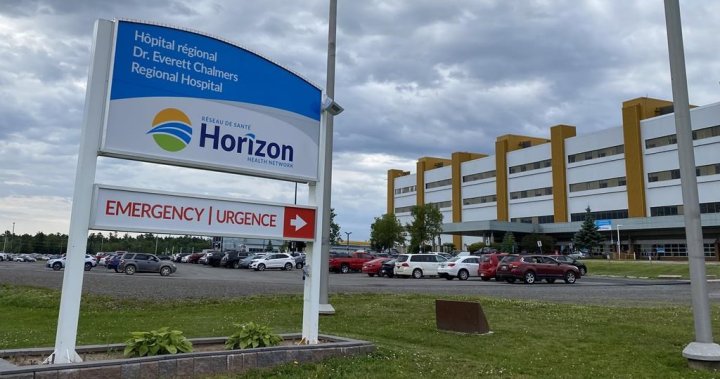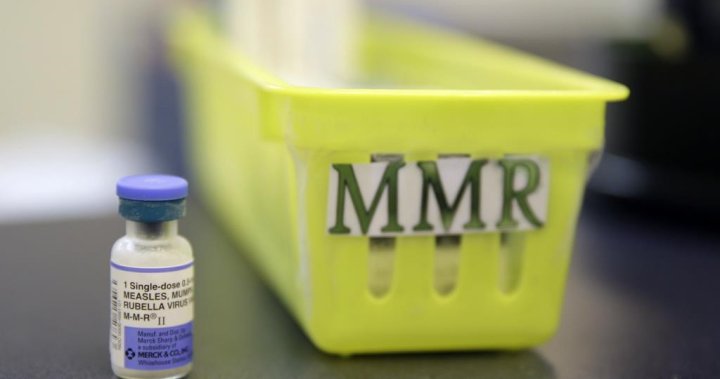A New Brunswick man who spent five days at the Dr. Everett Chalmers Regional Hospital in Fredericton, N.B., with pneumonia says he saw first-hand the ongoing impact of the health-care crisis in the province.
“I saw nurses, doctors, and all other hospital workers try their best to keep a semblance of some sort of health care going,” Tim Brooks wrote in a post on Facebook.
“Their frustration was visible and at times they couldn’t contain it, but their dedication never wavered.”
He said he shared what he saw and heard because he wants people to know the impact and the strain the New Brunswick health-care system is under.
He went to the ER, while visiting his family for the holidays, on Dec. 27, 2023, showing signs of a respiratory illness with no improvement. He said when he walked in, the ER waiting room was packed.
A triage nurse assessed him and brought him to the ER, where he encountered what he described as “chaos.”
“It was just a state of chaos, something that you wouldn’t expect to see in Fredericton’s capital city, three kilometres away from the legislature,” he said in an interview on Tuesday.
The things he witnessed left him disappointed, he said.
“There were people lying on stretchers everywhere. It was really hard to get around. When I was sick, I needed the washroom. They were pretty dirty. There was specimen collection at some ground,” he said.
“Time of death was being called. There were dementia patients. There were elderly patients needing care. There was a lot going on. There was trauma coming in. Everything. Everything was coming in. There were 20-plus — I’d say 20-plus, probably more — EMTs in a back hallway, with all of their patients on stretchers.”
He said he could hear people calling out for help. One patient, who ended up sharing a room with him, told Brooks they’d soiled through all the layers of clothing they had on.
“I thought of aging parents. My mom. People that I know at the end of life or after they’re in their golden years, to sit on their own,” he said.
“That really disturbed me. And, you know, and other people crying out that just couldn’t be seen. Just needed help. Needed a drink. Needed somebody to talk to and it would be a scary environment.”
Get the latest Health IQ news.
Sent to your email, every week.
Brooks said the hospital staff were doing everything they could to help patients, trying to keep some organization in the chaos.
“You could see some compassion fatigue, but you knew their hearts were still there,” he said.
He said he doesn’t place any blame, adding that this situation did not happen overnight, but the incident prompted him to speak out on behalf of all the people who simply cannot.
Brooks was eventually moved to an inpatient unit, but he said that, too, was overwhelmed, with many older patients.
The room was a converted family room, he explained, with no bathroom or sink, no oxygen or call bell.
His experience and what he witnessed made him want to show the public what is truly happening in the health-care system.
“So we tell our stories. Stick up for the health professions. Stick up for our parents. Stick up for the sick. We are judged by how we take care of our young, our sick and our elderly. We’re not doing a good job right now. We’re not.”
Horizon Health Network issued a statement on Dec. 31 asking the public to avoid its emergency departments due to a “large volumes of patients, and our priority is to care for trauma and critical care patients.”
“Patients with non-urgent medical issues may experience long wait times.”
On Jan. 2, it said the situation had not changed.
“Horizon’s Emergency Departments (EDs) remain extremely busy this week and we are continuing to ask the public to reserve the ED for life-threatening, emergency medical issues and to seek care for non-urgent needs – including respiratory illness symptoms – in another setting, such as through a primary care provider, walk-in/after-hours clinics, scheduling a virtual appointment through eVisitNB, phoning Telecare 811 or consulting with a pharmacist,” Christa Wheeler-Thorne, Horizon Health Network’s executive director for the Moncton area, said in a statement.
Horizon said the dedicated teams are working hard to provide care to the sickest patients, “including those requiring trauma care, critical care and intensive care, and this will remain our priority.”
“Patients with anything less than a life-threatening or emergency medical need will likely experience longer than normal wait times for care in our EDs as we continue to navigate these challenges,” the statement said.
It said it is working with the Department of Social Development and the New Brunswick Extra Mural Program to ensure patients can be safely discharged home with support – including interim care hours.
“We are also working to transfer, where possible, admitted patients not requiring medical care to an appropriate long-term care placement in order to help improve patient flow in our hospitals, including the Dr. Everett Chalmers Regional Hospital (DECRH),” the statement read.
The Vitalité Health Network also warned that three of its emergency departments were also experiencing delays due to a high volume of patients and bed capacity issues.
Stella-Maris-de-Kent Hospital, Campbellton Regional Hospital and Enfant-Jésus RHSJ† Hospital in Caraquet were on the list over the weekend.
The Stella-Maris-de-Kent Hospital will return to normal Wednesday and the advisory has been lifted at the CRH, but the Caraquet hospital remains over capacity by 182 per cent.
“When a public notice is published, the network is asking people whose health situation is not critical to see their family doctor or nurse practitioner, consult their community pharmacist or to contact Tele-Care (811) or eVisitNB,” said Dr. Natalie Banville, senior vice-president of client programs and medical affairs. “The Emergency Department remains open, however people who don’t need urgent and critical care can expect prolonged wait times.”
Vitalité said “improving access to primary care and enhancing patient flow and hospital performance are the network’s two key strategic priorities.”
“The implementation of a new integrated primary care model, aimed at improving access to primary care, progressed over the last quarter,” Banville said in a statement.




